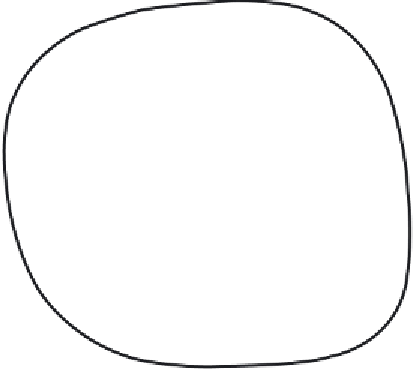Image Processing Reference
In-Depth Information
meet later, where the target shape is extracted conditional upon its expected variation. Lai's
approach also addressed
initialisation
, and showed how a GHT could be used to initialise
an active contour and built into the extraction process. There is, however, natural limitation
on using a single contour for extraction, since it is never known precisely where to stop.
In fact, many of the problems with initialisation with active contours can be resolved by
using a
dual contour
approach (Gunn, 1997) that also includes local shape and regularisation.
This approach aims to enclose the target shape within an inner and an outer contour. The
outer contour
contracts
whilst the inner contour
expands
. A balance is struck between the
two contours to allow them to allow the target shape to be extracted. Gunn showed how
shapes could be extracted successfully, even when the target contour was far from the two
initial contours. Further, the technique was shown to provide better immunity to initialisation,
in comparison with the results of a Kass snake, and Xu's approach.
Later, the dual approach was extended to a discrete space (Gunn, 1998), using an
established search algorithm. The search used dynamic programming which has already
been used within active contours to find a global solution (Lai, 1995) and in matching and
tracking contours (Geiger, 1995). Although only relatively recent, Gunn's approach has
already been used within an enormous study (using a database of over 20 000 images no
less) on automated cell segmentation for cervical cancer screening (Bamford, 1998), achieving
more than 99% accurate segmentation. The approach is formulated as a discrete search
using a dual contour approach, illustrated in Figure
6.8
. The inner and the outer contour
aim to be inside and outside the target shape, respectively. The space between the inner and
the outer contour is divided into lines (like the spokes on the wheel of a bicycle) and
M
points are taken along each of the
N
lines. We then have a grid of
M
×
N
points, in which
the target contour (shape) is expected to lie. The full lattice of points is shown in Figure
6.9(
a). Should we need higher resolution, then we can choose large values of
M
and
N
, but
this in turn implies more computational effort. One can envisage strategies which allow for
3 of N radial lines
Outer contour
Target contour
Inner contour
M points
Figure 6.8
Discrete dual contour point space

























